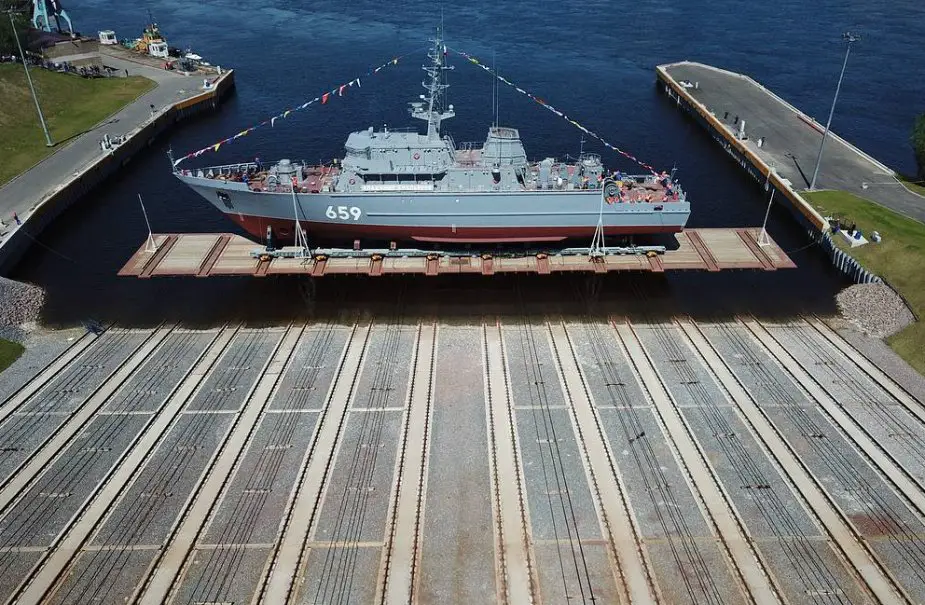The Project 12700 latest minesweeper Vladimir Yemelyanov has left the Sredne-Nevsky Shipyard (part of the United Shipbuilding Corporation) quay and is heading for the Gulf of Finland for shipbuilders’ sea trials, the Shipyard’s press office reported on Monday.
The Project 12700 latest minesweeper Vladimir Yemelyanov has left the Sredne-Nevsky Shipyard (part of the United Shipbuilding Corporation) quay and is heading for the Gulf of Finland for shipbuilders’ sea trials, the Shipyard’s press office reported on Monday.
 The Project 12700 latest minesweeper Vladimir Yemelyanov (Picture source: TASS)
The Project 12700 latest minesweeper Vladimir Yemelyanov (Picture source: TASS)
"The trials will last a month and a half. Over this period, the Sredne-Nevsky Shipyard’s specialists and the crew of the latest minesweeper will check the operation of the vessel’s basic systems and mechanisms in real conditions of a sea transit. After completing the shipbuilders’ sea trials, the Shipyard’s delivery team and the minesweeper’s crew will switch to state trials," the press office said in a statement.
The minesweeper Vladimir Yemelyanov was floated out on May 30 at the Sredne-Nevsky Shipyard in St. Petersburg. The Vladimir Yemelyanov became the Project 12700 ‘Alexandrit’ fourth vessel laid down at the Shipyard. The minesweeper was named after Hero of Socialist Labor Vladimir Yemelyanov who had been the Shipyard’s head during the Soviet period.
Project 12700 Alexandrit-class coastal-type minesweepers are referred to the new generation of minesweeping forces and are designated to fight sea mines, which the new ships can encounter in the sea and at the seabed without entering the dangerous zone. The minesweepers can employ various sweeps, as well as remotely controlled and autonomous underwater drones. The minesweepers of this Project displace 890 tonnes, are 62 meters long and ten meters wide and have a crew of 44 men.
Project 12700 mine countermeasures vessels (minesweepers) have their hull made of glass-fibre reinforced plastic. As its advantage, this solution provides for the ship’s higher strength compared to the steel hull. The hull made of the monolith glass-fibre reinforced plastic has a longer service life (up to 30 years) than the hull made of low-magnetic steel while its weight is considerably smaller.
The shipbuilders are set to deliver the minesweeper to the Russian Navy in December 2019 and is about to join Russia’s Black Sea Fleet. The Russian Navy is expected to receive dozens of project 12700 minesweepers by 2030.
© Copyright 2019 TASS. All rights reserved. This material may not be published, broadcast, rewritten or redistributed.







